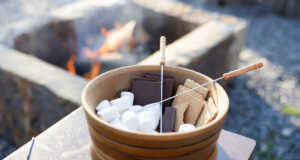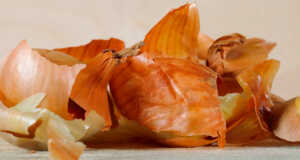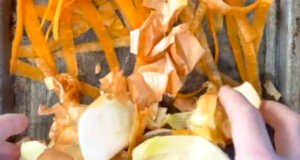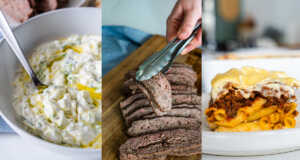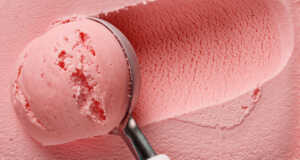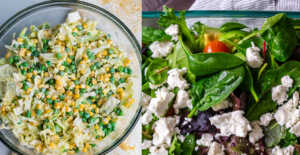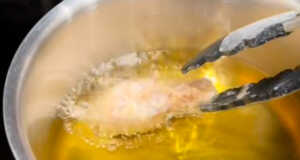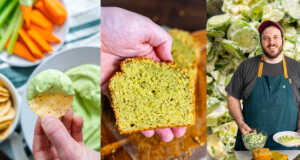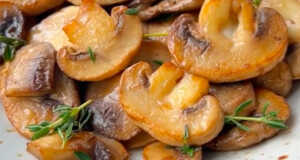Let’s venture into a world of uncharted territory by creating focaccia breads inspired by a classic soup. Between the soft and crisp exterior of focaccia bread holds the fillings of each soup varietal, we even substituted the canned soup for the water in some of the bread recipes. Will it turn out? Will it taste good? Will it focaccia? These were the questions I kept asking myself until I saw the results. Scroll down to find out how each turned out!
The Soups:
French Onion Soup:
A soup we’ve all long been familiar with. The one that only tastes good when you eat the cheese and bread from the top with a hint of that sweet onion-y broth. This soup I knew stood as a good contender for this bread due to it’s broth nature, it’s re-creatable flavors, and it’s signature Swiss cheese.
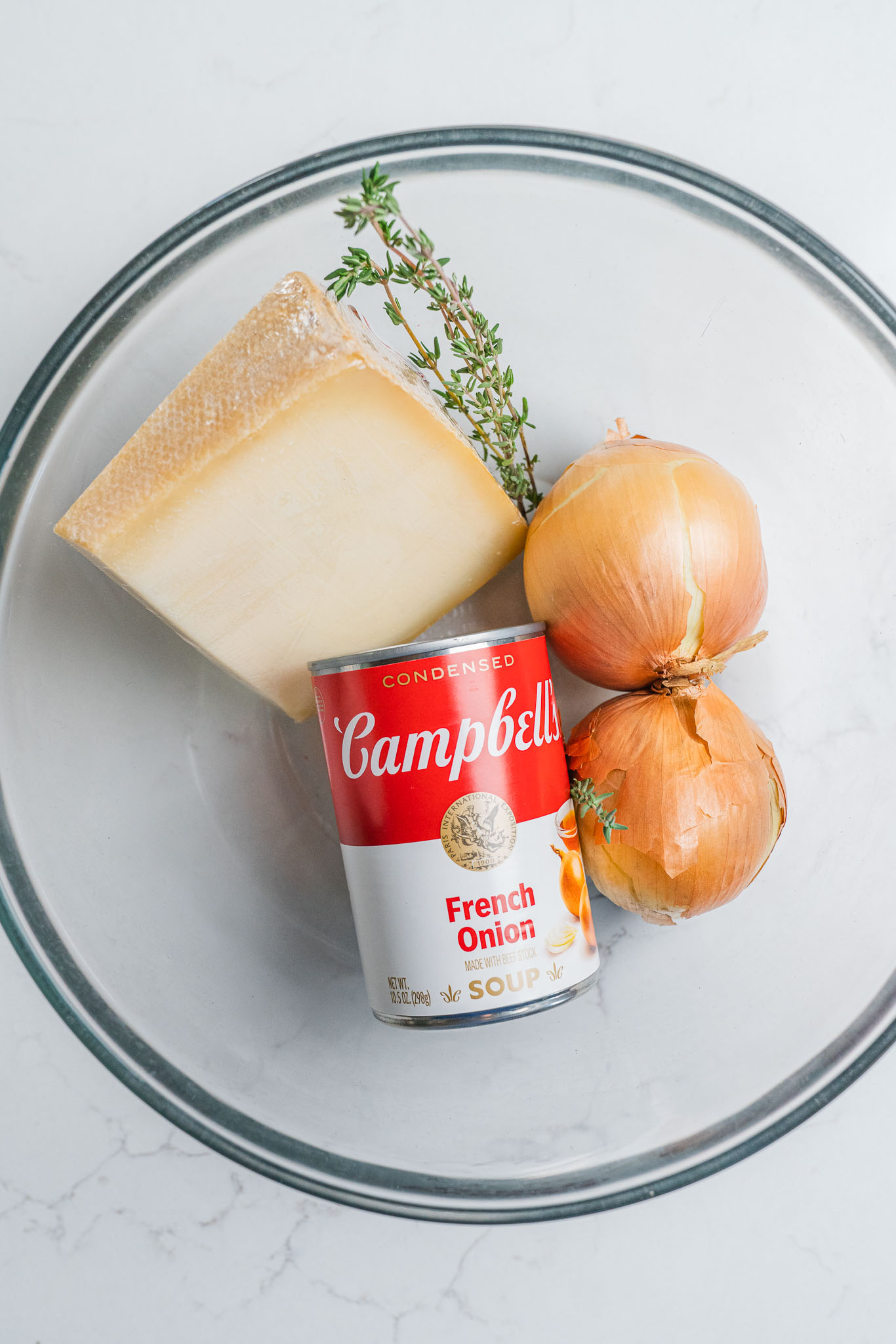
Broccoli Cheddar Soup:
One of my favorite soups growing up and also one of the first soups I learned could be recreated in a focaccia bread from my experience making this on the job.
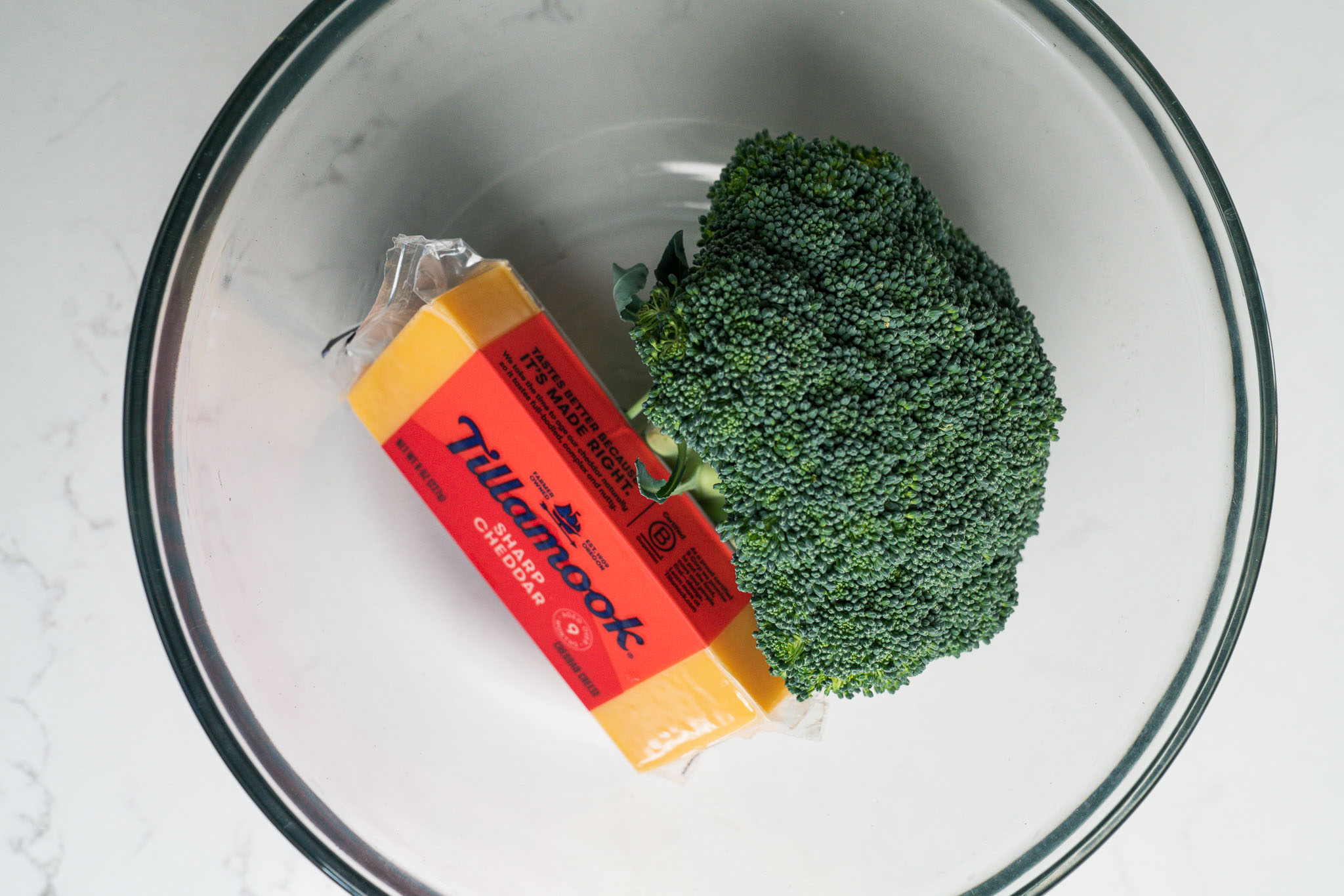
Creamy Tomato Basil Soup:
This bread I was most skeptical of that uses a can of tomato soup as the base of the bread, how would that affect the bake? I had no clue. The results of this one were unanimous.
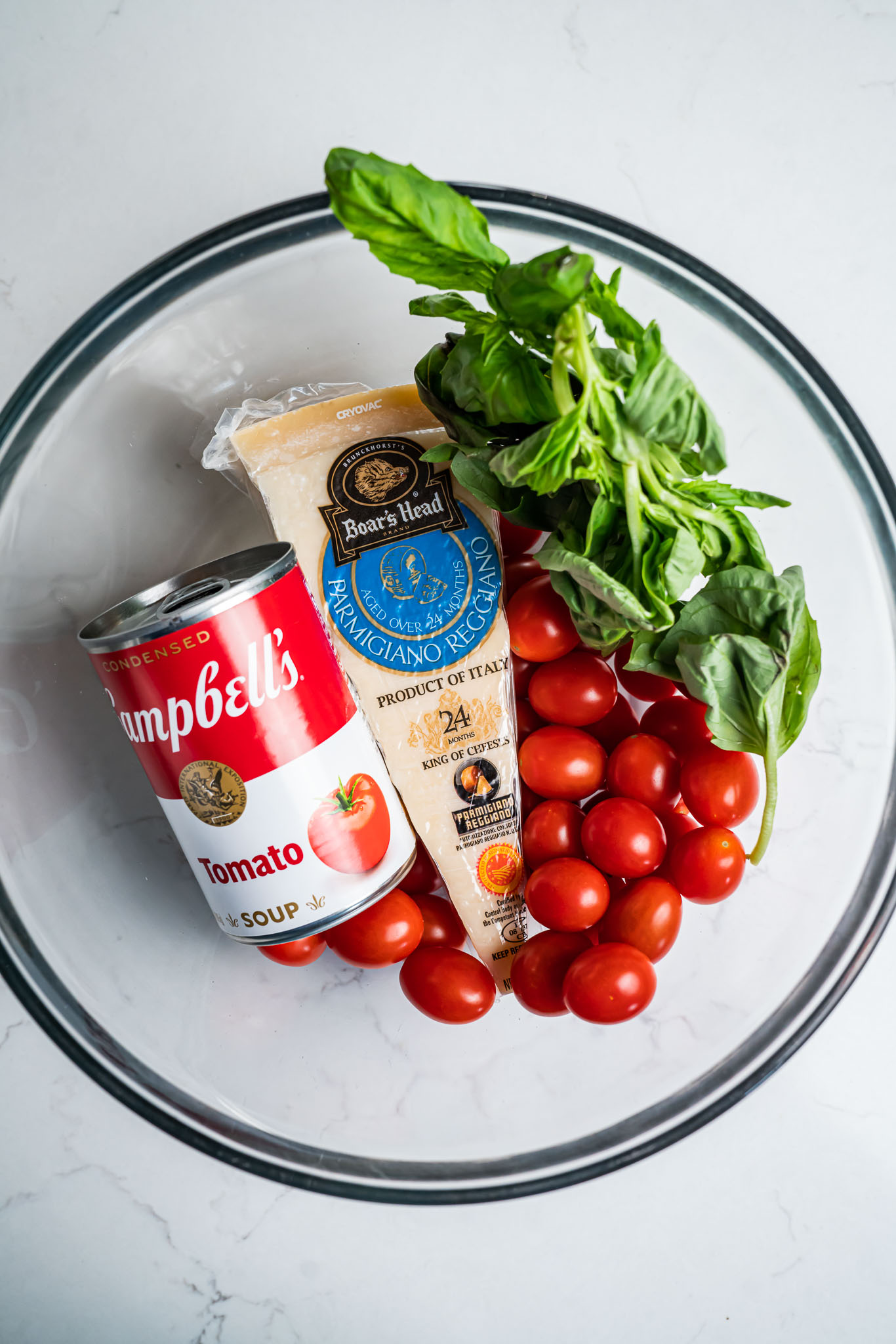
The Method:
The method for each of these breads had to be the same in order to yield a consistent product. I had to ask myself. How can we alter a bread recipe to still yield an even bake? How can we maximize the taste of the soup in the bread? How do we adjust each recipe?
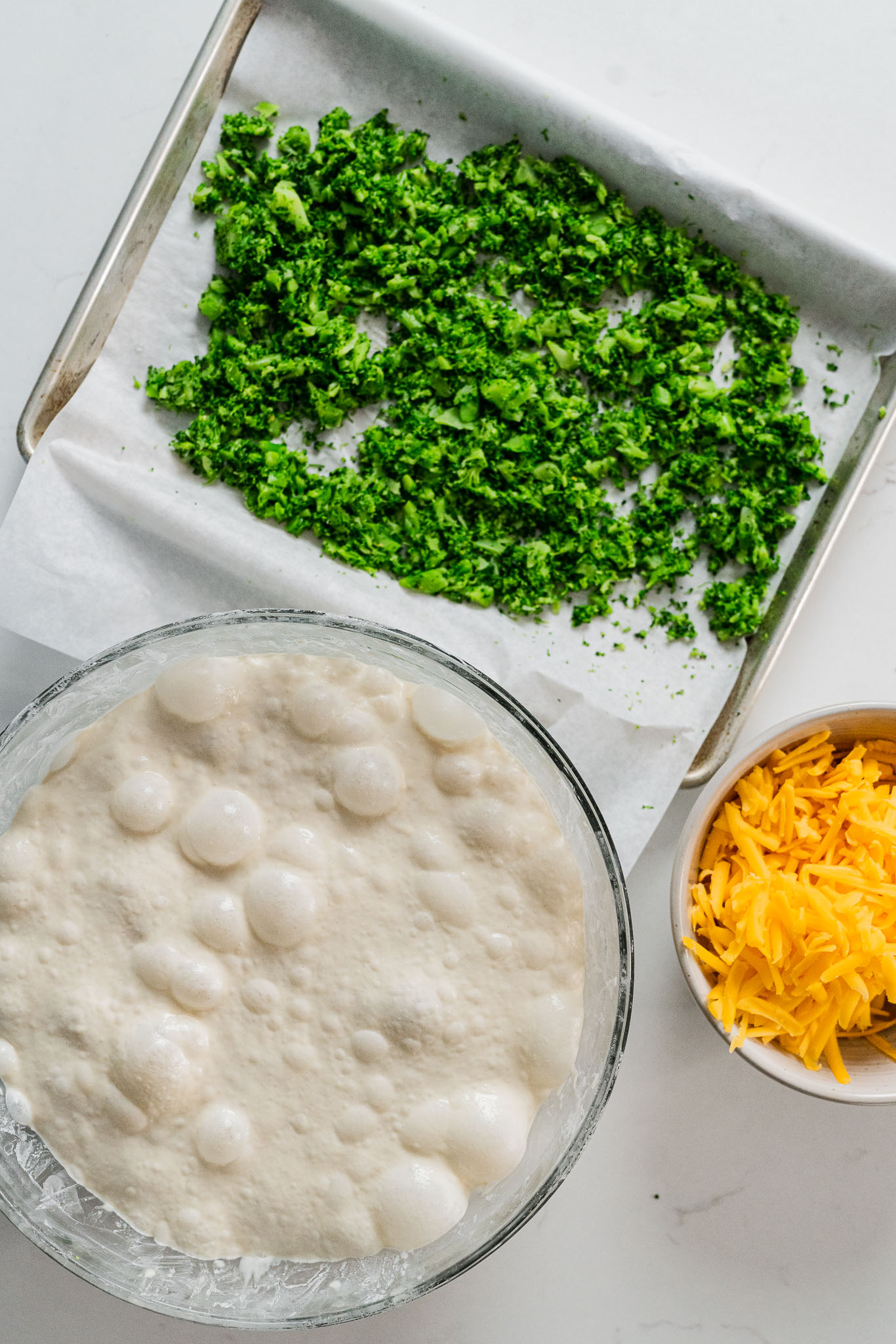
#1 Recipe
I used one focaccia bread recipe that I trust and use in all my focaccia recipe bakes. All purpose flour, salt, yeast, water and olive oil. I started to experiment with this concept with the French onion and tomato basil soups. I thought French onion is just a very flavorful beef broth and why can’t we substitute the ready made soup for the water in the dough. After all, broth is just seasoned and flavorful water. I added more water to the French onion to yield exactly 2 cups. The tomato soup was a bit different, but I was determined to use a can of tomato soup as the water. Tomato soup is mostly tomatoes, so I wasn’t sure how that would affect the texture and recipe. The can only yielded around 3/4 cup so I had to add water until I reached 2 cups again. I was shocked how they both worked flawlessly.
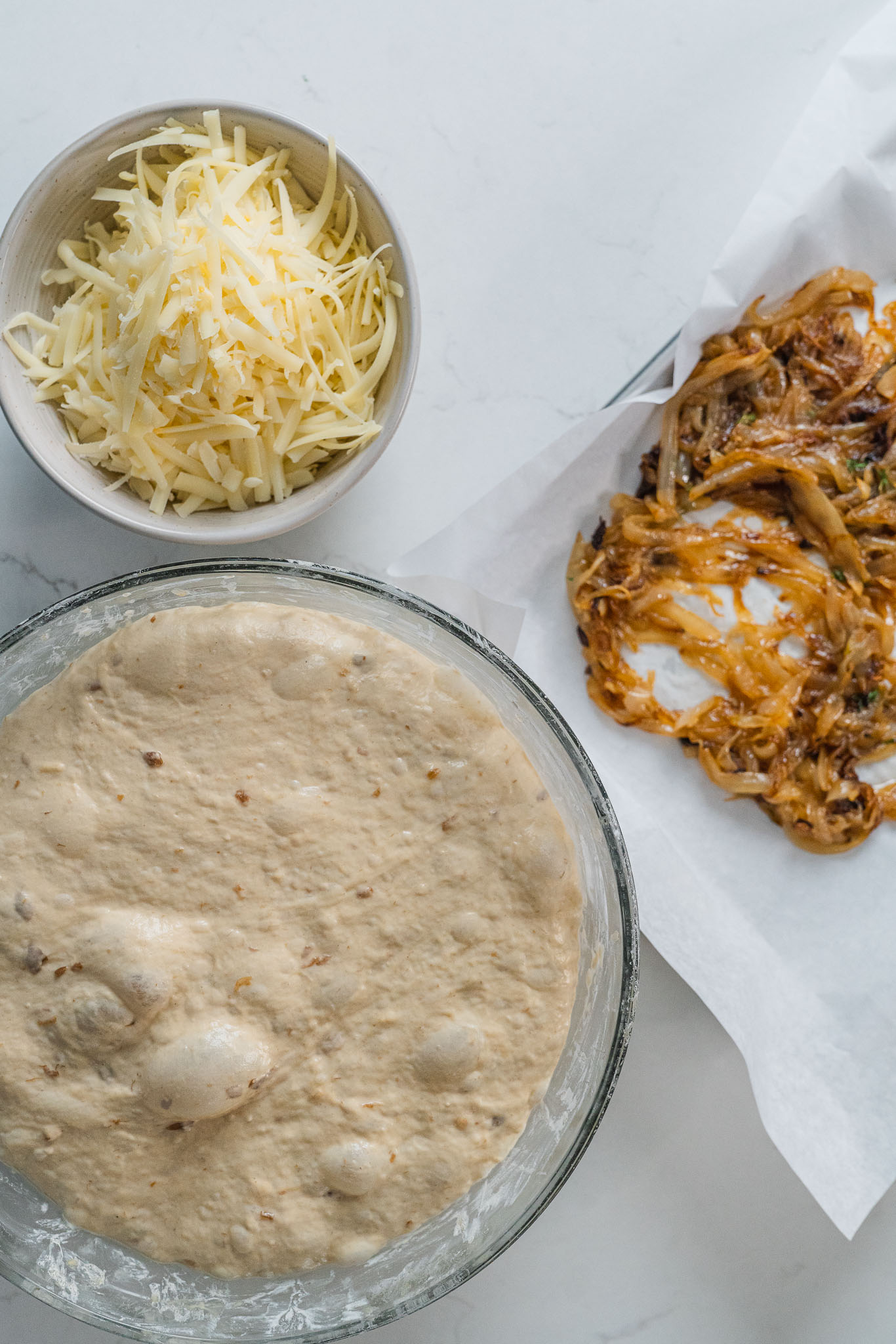
#2 The Flavors
When coming up with this concept I knew I had to think what defines the flavors of each of these soups in order to make them work in a baked bread. Broccoli Cheddar really helped drive this idea because the flavors are staring you right in the face. I can fold cooked and drained broccoli pieces and grated cheddar cheese into the recipe and see what happens. Now I’m thinking, “hmm.. I can take caramelized onions, Gruyere cheese, and fold in fresh thyme to a bread recipe to make the perfect French onion bite.” Then I went off the rails thinking I can use the soup as the base, but it was actually the part of the recipe I love the most. It gives the bread most of it’s flavor. Use store-bought soups as the base of the bread. The tomato soup followed with flavors of tomato, basil, parmesan, and fresh garlic. EASY.
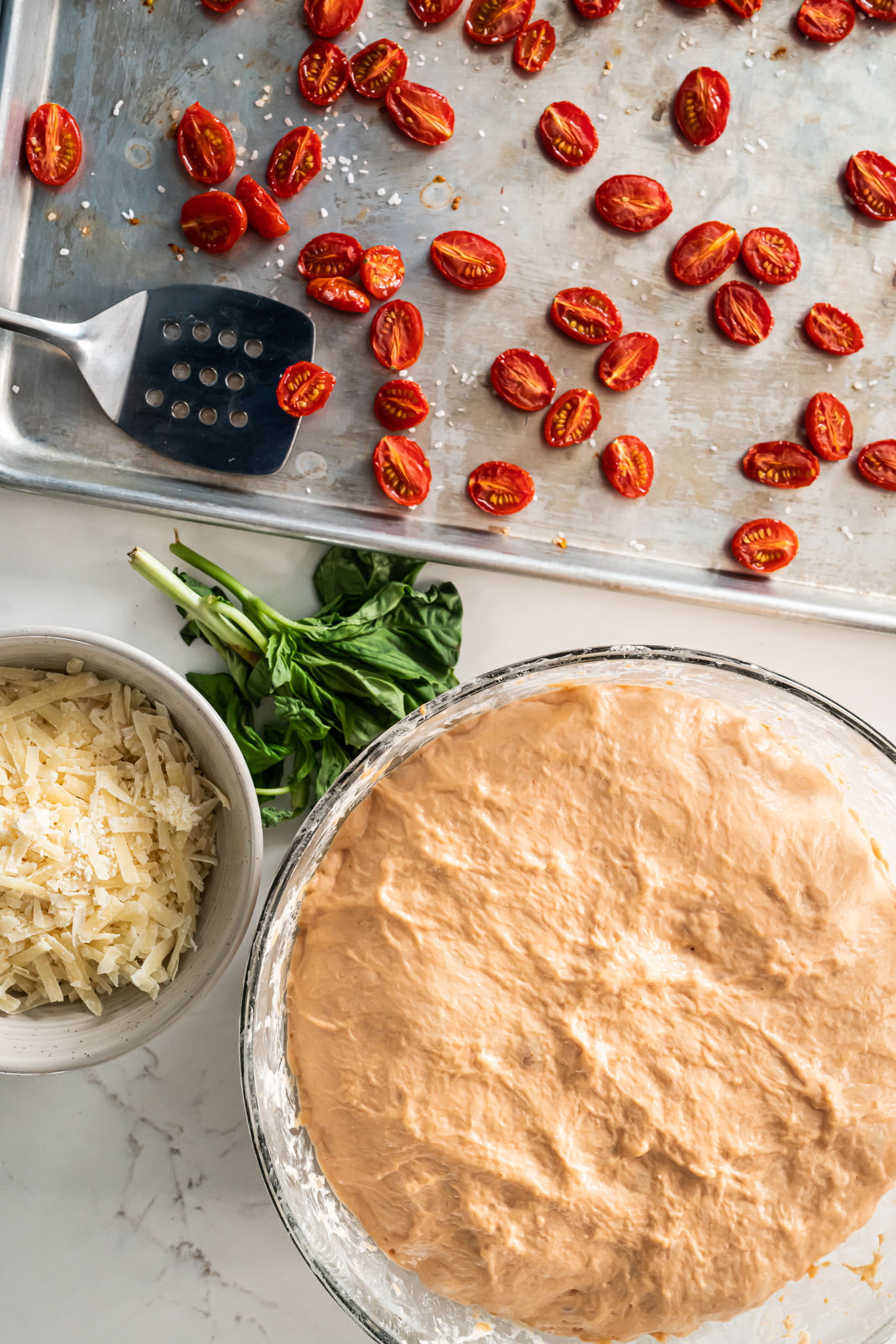
The Taste Test:
How did each bread taste after we stuffed each to the gills with soup ingredients? Let’s just say these focaccia breads were gone before the end of the day.
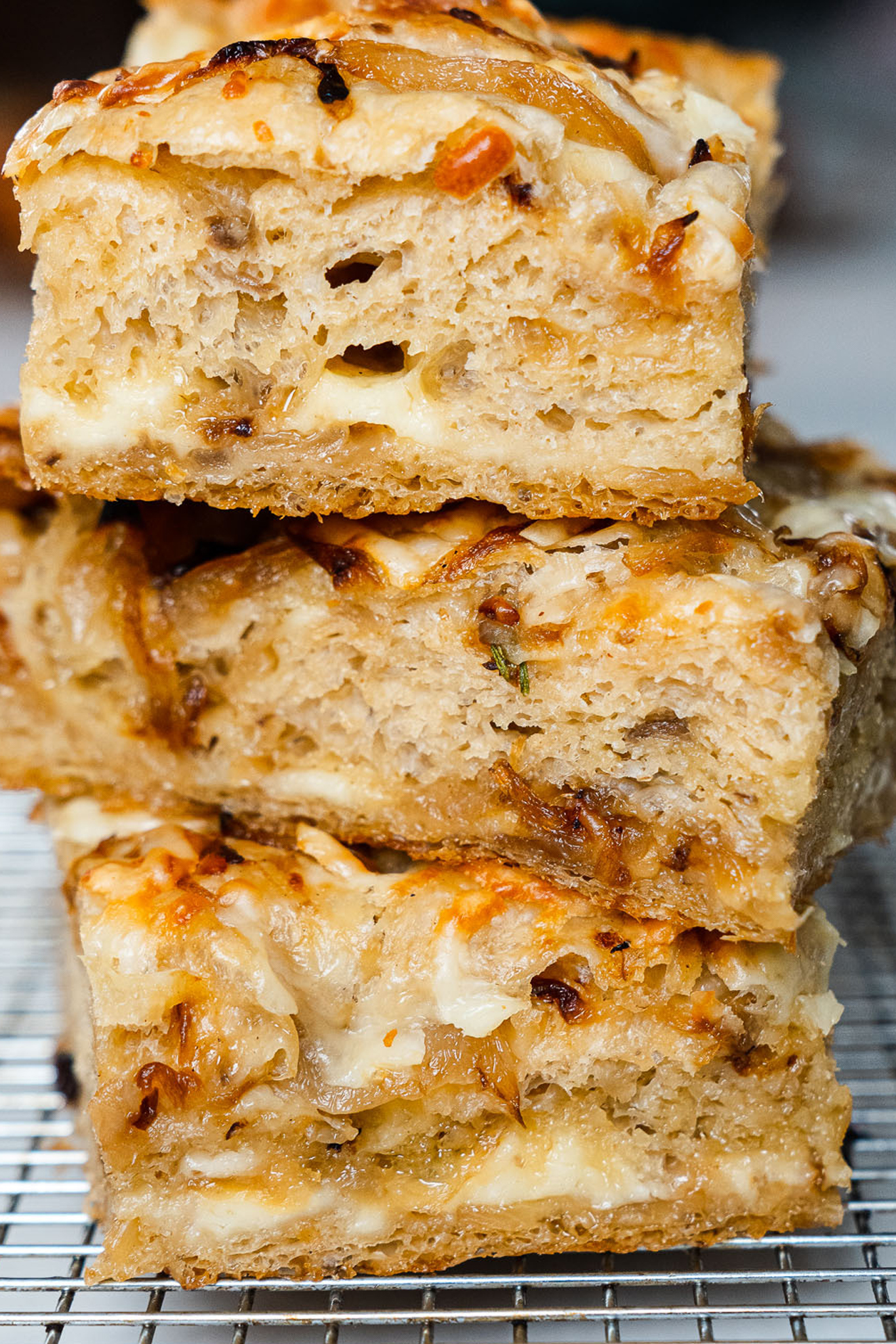
French Onion Focaccia
The French onion soup focaccia bread was to me the most SHOCKING of all the focaccias. The flavors translated perfectly from the soup. The base Campbell’s soup that we mixed into the base permeates the dough with sweet onion as you take a bite of actual sweet caramelized onions. The fresh thyme also perfumed the dough before each bite as the flavor finishes with the funky salty gruyere cheese. I could not put this bread down after it was baked. It felt the most focaccia bread-like, it proofed and baked the best of all three!
Get the recipe for the French Onion Soup Focaccia HERE.
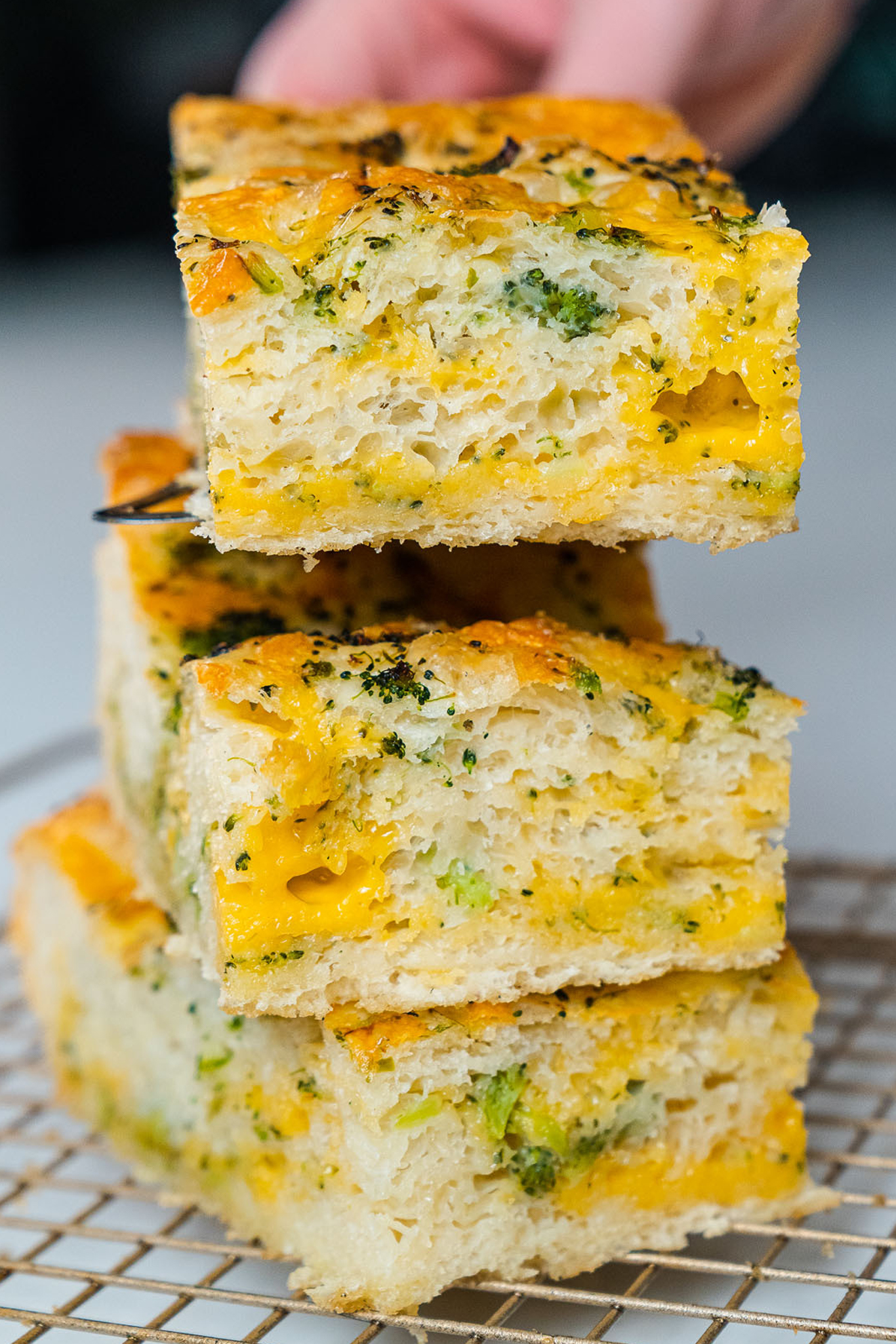
Broccoli Cheddar Focaccia
This bread was an instant smash! Taking a bite into a piece of bread loaded with cheddar cheese as you crunch little bites of perfectly steamed broccoli is a heaven I didn’t know I could experience on Earth. The broccoli does affect the bake if you don’t rid all the moisture, so I was very nervous to bake this bread this way. Turns out I did a great job straining the broccoli. Next time I bake this I will serve this with a bowl of broccoli cheddar soup and really wow my guests. I do also think I may take the risk of mixing the base soup into the bread recipe. The flavors were delicious and the bread was absolutely remarkable, but it didn’t have as much impact as the other two that had soups mixed in.
Get the recipe for the Broccoli Cheddar Soup Focaccia HERE.
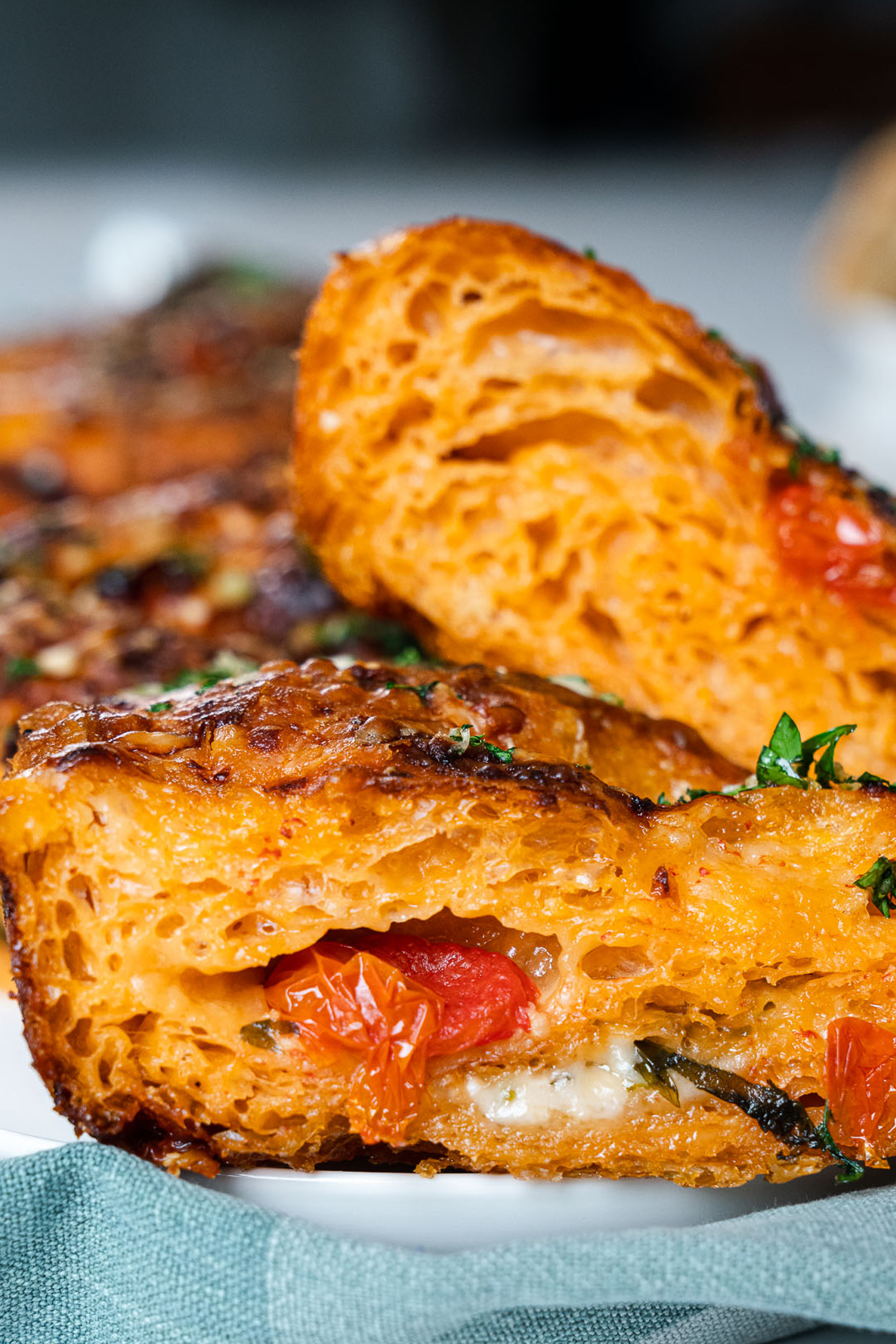
Tomato Basil Focaccia
I was SO worried about how this bread was going to bake with such a high tomato-y content to the base of the bread using the store-bought tomato soup instead of water. On first bite, you get perfumed with tomato-y goodness kind of like pizza, then you take a bite into the parmesan and the par-dried cherry tomatoes to really get the sense of the flavor. It was a party on my taste buds. From the raw garlic flavor I brushed on at the end of the bake to the sharp nutty parmesan, this focaccia truly shocked me with how great it tasted. The bread did have a bit more of stodgy-ness to it, but that may only be because we sliced it early due to a shortage of time. ALWAYS be sure to let your bread fully cool before slicing into it to be sure the bread finishes drying and sets properly.
Get the recipe for the Tomato Basil Soup Focaccia HERE.
Surprisingly none of the bread recipes came out dense or too much. Each focaccia presented different flavors and textures due to some of the different vegetables or cheeses. I wonder what other flavors we can experiment with because I do believe this is the start of something new and I’m excited to see what we can create next with this method.
Should we do a part two?
